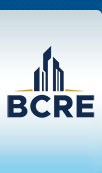- Step 1: Preparation
- Step 2: Go Shopping
- Step 3: Accepted Offer – “First Steps”
- Step 4: Closing Escrow – “Final Steps”
- Step 5: Moving In
Preparation is the first step of the home buying process which combines three mini steps into one, mainly because they are all done simultaneously.
- Pre-Approval – The first step is to get pre-approved. Speak with someone at your local bank or a mortgage broker to discuss what you qualify for. You will basically need to gathering your financial information and give it to whoever is going to do your loan.
- Online Search – Once you’ve been pre-approved and know what your price range is, you’re likely going to want to start looking. There are multiple website to search for homes, including iLiveInTheBayArea.com, Realtor.com and Redfin.com
Residential Search - Drive Neighborhoods – Once you start searching online, you’re likely to see 50, 100 or even more properties that fit your criteria. Along with an online search, most of my clients like to drive the neighborhoods to get a feel of the area they’re looking at from their computer to help narrow their search even further Do you know if you’re shopping for a condo, a townhouse or a home?
By now, you should have narrowed the massive amount of homes that originally fit your criteria into a few select neighborhoods.
- Go See Interiors – As you go and see these homes you’ll start to get an even better idea on how to narrow your search even further.
- Send In Competitive Offer – Once you have found the home you want, you send in your competitive offer! Be sure you have a realistic timeline of hearing back from the seller which can vary greatly depending on the type of sale it may be.
The third step in the home buying process begins once your offer is accepted. There are a few mini steps you must take care of simultaneously on this one
- Offer & Deposit– You have to send in your deposit to the escrow company once your offer is accepted. This will start a timeline or a countdown for you to do all your inspections, have an appraisal done and close escrow.
- Inspections– There are inspections for literally anything that you can imagine; roof inspection, general home inspection, sewer inspection, soils and engineering inspections, etc. The most highly suggested inspections in my local area are;
- Home Inspection – Covers the general overall condition of the property, from foundation to roof.
- Termite Inspector – Checks for termites and also checks for dry rot – something which is very common in the Bay Area due to the proximity of the ocean.
- Roof Inspector – Checks condition of roof and estimates remaining useful life.
- Sewer Lateral – Checks the connection of your sewer line from your home to the street. This isn’t required with newer homes or homes with a septic system, but in most of my market it is a local requirement.
- Local Required Inspections & Unique Circumstances – There maybe others depending on the type or location of home that you buy. For example some cities require additional inspections to be done. Also if you are buying a home on a hill or a steep slope, you may want to pay for an engineer to check on the soil and the general foundation to make sure the house will remain stable over time.
- Loan Updating & Appraisal – Along with the inspections, you need to provide detailed financial information to whoever is doing your loan. Simultaneously, they will also schedule an appraiser to come out and evaluate the property
For the fourth step, all of your inspections have been done along with the appraisal.
- Remove Contingencies – At this point, if you choose to back out of the deal for whatever reason, the seller can keep your deposit for basically wasting their time.
- More Lender Updates – Don’t be surprised if your lender again will likely need newly updated information and maybe even some additional info he or she didn’t request beforehand.
- Prepare Funds – You will need to prepare your funds to be sent over to the escrow company.
- Sign Escrow Docs – A representative from escrow will inform you that your loan docs have arrived and are ready to be signed. After you get to sign the huge stack of loan documents, the escrow officer will let you know when and how to pay the remaining balance that will be due from you.
In the fifth and final step, you prepare to completely close the deal and move in.
- Pay Funds – Pay all the funds that were requested by escrow and wait the last few days while everything is transferred from seller to buyer and vice versa. Escrow will also record all the necessary documents with the local county office.
- Collect Paperwork – Collect all the paperwork you’ve signed from the escrow company and your real estate broker.
- Get Keys! – The best step…Getting the keys to your new home!
- Utilities – Before you get too excited, don’t forget you’re still going to have to switch all the utilities to your name including the electric, water and garbage!

